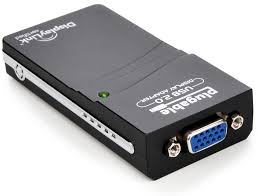One of the main purposes of setting up this blog is to document my Linux experience. Using Linux, you learn very quickly that internet forums and tech blogs are your friends. Most of the time, a google.com/linux search on any problems your having will return a ton of assistance from posts that people have made on blogs and forums online, documenting their experiences and offering others help. I will make an attempt to do whatever little bit I can to contribute my own experiences in the same spirit.
Also, I hope that some people might just be interested in learning a little more about Linux, and maybe this can at least server as some sort of starting point.
I’ve never really been a fan of Windows, or Microsoft in general. I’ve always promoted alternatives in a computing environment; I hate being dependent on one application for any one task. When it comes to internet browsers, I always have several installed – Firefox, Internet Explorer (Windows only), Epiphany (Linux only) and Opera. For chat, I’ve always had some combination of MSN Messenger, Skype, Google Talk and ICQ installed. For music, iTunes, Realone, Windows Media Player, Winamp. For office applications, I’ll use MS Office, Open Office, Google Docs/Spreadsheets. You get the picture. Point is, when it came to operating systems, for the longest time my only option was Windows.
There are several things that I really like about Linux over Windows. The first is that it’s completely free. Another huge selling point is that there are far fewer security concerns because of the diversity of distributions and quality of the OS. (You don’t need anti-virus software in Linux.) And, I think the best advantage that Linux has over other operating systems is that it’s highly customizable. For example, you can change your entire desktop environment, which won’t make any sense to most Windows or Mac users because you just can’t do that with Microsoft’s or Apple’s offerings. The desktop environment is essentially everything.. graphical.. about your computer. Once you turn it on and get past the black screen / white text type stuff, everything else you see is a product of your desktop environment. In Linux, if you want your computer to run a bit faster, you can try out a light-weight desktop environment. If you want some fancier features, you can upgrade to the latest version of GNOME or KDE. In contrast, with Windows Vista, there is one and one desktop environment only, and you’ll probably need to go out and buy a new computer just to run it.
I admit that I am not very familiar with Macs, but from everything I gather this is the difference: with a Mac, you pay a premium for something that really works; with Linux, you don’t have to pay a cent for the operating system and you can breathe new life into old machines, though it might take a little more involvement in order to find the best match for you and your machine. I think either option makes more sense over a Windows machine for almost anything, but what attracted me to Linux is the low-cost to try it out (if I found I didn’t actually like it, I wouldn’t have wasted any money) and the satisfaction you get from having the option to take more of a hands on approach to things, from being able to have the power to customize your computer as you see fit.
For the average computer user who isn’t interested in spending hours customizing their machine though, I was really surprised at how easy to use Ubuntu (the distribution of Linux I’m running) is right away. Installation was straightforward and painless for the most part – done within an hour. You can navigate around the computer just as you would in Windows or the Mac OS for the most part, and a lot of the same or similar programs are available for your average computer jobs. Even if the standard applications aren’t available, there are usually two or three alternatives to choose from which will do the job just as well if not better.
Browsers: Firefox, Opera
Email: Evolution (Outlook alternative), Thunderbird (Outlook Express alternative)
Chat: aMSN (msn simulator), gaim (handles MSN, ICQ, gtalk, AIM), Skype
Music: Banshee (iTunes-like – iPod support!), Rhythmbox (iTunes like), Amarok (playlist based), gtkpod (for iPod syncing), XMMS (winamp alternative), Xine, Totem
Office Apps: Open Office (reads and writes MS Office docs; Word, Excel, Powerpoint, Access alternatives), Google Docs/Spreadsheets (web-based – handles ms office docs), JPilot (palm desktop alternative)
Graphics: GIMP (photoshop alternative)
The other cool thing is that most of these applications are available for Windows or the Mac OS too, so you can try them out without actually changing your operating system (e.g. Gaim, aMSN, Open Office, GIMP).
Installing Linux really made me feel like I was standing up for my computer. I am getting a lot more value from my machine, and it hasn’t even cost me anything. Anyone out there who’s even somewhat interested in Linux, I highly recommend Ubuntu and encourage you to get your hands on a Live CD and take it for a spin.


